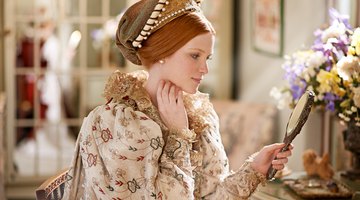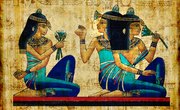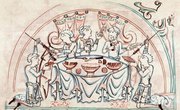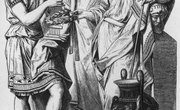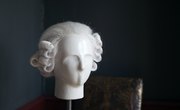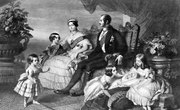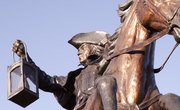Marriage in Elizabethan times appeared to be similar to marriages of today, in that some of the traditions have remained constant; however, a closer look reveals many key differences. For example, it was considered foolish to marry for love, and strangely enough, those who were of lower classes were more likely to have a choice in who they married.
Identification
Elizabethan women had very little choice in husbands. Marriages were arranged by their families in order to bring prestige or wealth to the families involved. This is why poor women could sometimes choose their spouses. Women were required to be subservient to their husbands and to men in general. They were taught that men were more intelligent than women. Many young men and women didn't meet their spouses until their wedding day. Marriage was considered more of a business arrangement between the families than a relationship between a man and a woman.
Features
Elizabethan law gave men full control over their wives. Married women were basically considered to be the property of their husbands and were expected to bring a dowry or marriage portion to the marriage. This would consist of property, money and various goods. Elizabethan wives were also required to run the household and give their husbands children. Though most often uneducated academically, they were taught housekeeping and even herbal medicine by the older women in their families.
Benefits
Marriage in Elizabethan times was considered a necessity by both men and women. Women who didn't marry were considered witches by their neighbors, and for lower class women, the only alternative was a life of servitude to wealthier families. Marriage allowed them social status and children. While the husbands received the marriage portion from their wives, marriage allowed a woman to maintain a certain status even if she became a widow. Widows were allowed to own property and run businesses.
Significance
Marriage was dictated by the church, and couples were required by law to follow the religion dictated by the queen at the time. While Queen Elizabeth I favored the Protestant religion, her predecessor and sister Queen Mary I was a fervent Catholic who burned Protestants for their beliefs. This earned her the nickname of "Bloody Mary." All wedding ceremonies were held in the Queen's churches and were performed by a minister. While the religions varied, the basic process was the same.
Types
Wealthy and noble Elizabethan women sometimes received an education, but poor women did not. While noble women often had house servants to help with the chores and welfare of their families, poorer women did it single-handed until their female children were old enough to help. Marriage was legal for girls at the age of 12 and boys at 14, but it was rare for couples to marry at these ages. Average ages of marriage were 20 to 29.
Related Articles
Writer Bio
Angela Atkinson is a freelance writer, editor and researcher, who has been writing professionally since 1995. Atkinson is the St. Louis Family & Parenting Examiner for Examiner.com and authors "In Pursuit of Fulfillment," a popular self-improvement blog. She co-founded The WM Freelance Connection, a resource blog and community for freelance writers offering writing tips, job listings and more. Atkinson studied journalism at Eastern Illinois University.

